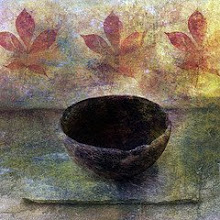 Buddhism has been described as a very pragmatic religion. It does not indulge in metaphysical speculation about first causes; there is no theology, no worship of a deity or deification of the Buddha. Buddhism takes a very straightforward look at our human condition; nothing is based on wishful thinking, at all. Everything that the Buddha taught was based on his own observation of the way things are. Everything that he taught can be verified by our own observation of the way things are.
Buddhism has been described as a very pragmatic religion. It does not indulge in metaphysical speculation about first causes; there is no theology, no worship of a deity or deification of the Buddha. Buddhism takes a very straightforward look at our human condition; nothing is based on wishful thinking, at all. Everything that the Buddha taught was based on his own observation of the way things are. Everything that he taught can be verified by our own observation of the way things are.If we look at our life, very simply, in a straightforward way, we see that it is marked with frustration and pain. This is because we attempt to secure our relationship with the "world out there", by solidifying our experiences in some concrete way. For example, we might have dinner with someone we admire very much, everything goes just right, and when we get home later we begin to fantasise about all the things we can do with our new-found friend, places we can go etc. We are going through the process of trying to cement our relationship. Perhaps, the next time we see our friend, she/he has a headache and is curt with us; we feel snubbed, hurt, all our plans go out the window. The problem is that the "world out there" is constantly changing, everything is impermanent and it is impossible to make a permanent relationship with anything, at all.
If we examine the notion of impermanence closely and honestly, we see that it is all-pervading, everything is marked by impermanence. We might posit an eternal consciousness principle, or higher self, but if we examine our consciousness closely we see that it is made up of temporary mental processes and events. We see that our "higher self" is speculative at best and imaginary to begin with. We have invented the idea to secure ourselves, to cement our relationship, once again. Because of this we feel uneasy and anxious, even at the best of times. It is only when we completely abandon clinging that we feel any relief from our queasiness.
These three things are known as the three marks of existence.
1. pain
2. impermanence
3. egolessness






